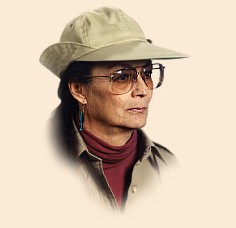|
A few more books showed up in the mail this
past week. One from Frank Amato Publications,
Floating and Fishing Oregon's Wilderness
River Canyons, was sent out within a
day or two of its arrival to Benjamin Hart for
a review. (That one will appear in our Review
section next week.)
One which arrived from the Lyons Press I had heard
about, and frankly I have mixed feelings about it.
The book is Trout Unlimited's Guide to America's
100 Best Trout Streams. Trout Unlimited (TU)
has published this kind of information before, and
there are rivers which had previously been in the
book which were deleted from this version. I'm
going to quote from the Foreword, by Charles E.
Gavin, President of TU:
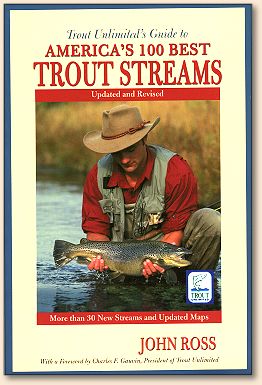
"As I began thinking about what would be an
appropriate message to include in a book about
America's 100 best trout streams, the very
notion of 100 great trout streams suddenly
struck me like a thunderbolt. One hundred
"best" trout streams and scores of other
great ones that did not make the "best" list.
That is truly something for which we should
be thankful.
There remain a good number of untrammeled,
pristine places in the United States, and
some of them are among the locations featured
in this book. But this book's unwritten
subtitle is really stewardship and restoration.
More than a few of the streams selected as
among the best are places that, for human
intervention, could have become or remained
among the worse. I am pleased to say that
Trout Unlimited's volunteers and staff have
had a major role in that intervention and
have, for almost 50 years, befriended, protected,
and restored many of the 100 best and help many
other quality streams."
I really applaud TU for the work they have
done, and continue to do in stream restoration
and protection - and for that reason I will
encourage you to buy the book to help support
those efforts.
However, here is the problem I have. As I
understand it, the submissions as to which
streams/rivers to include are made by TU
members - many of whom are very proud of
their local resource. Now whether the
problem is it takes about a year to get a
book to publication, or if the local folks
are trying to gloss over a major problem so
their fishery does get listed (called "follow
the money"), there are streams/rivers which
in my opinion do not belong on the top 100 list.
These are rivers and watersheds which are in
great danger - either by lack of water and
control of water releases, or in one particular
case, a river which is so polluted by agriculture
run off that the insect population is dying,
fish numbers are down and no one seems to care -
or be willing to do anything about it. I am
referring specifically to the White River below
Bull Shoals Dam and the North Fork of the White
River below Norfork Dam. Both are listed in
the 100 Best. They should be listed in the most
threatened rivers of America. Shame on
the local TU Chapter, The Central Arkansas Chapter
for not making this a major, major issue. The
businesses and local dignitaries who have made a
living off this water for years should be tarred
and feathered.
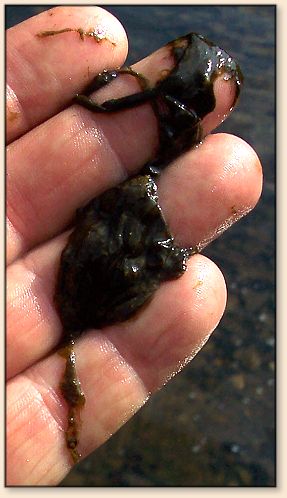
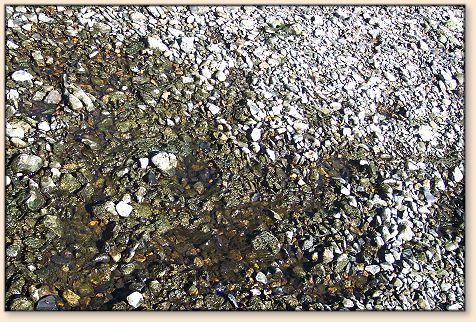
For the complete article on the White River
problems, click HERE.
I can forgive some things being left out, for
example, the State of Michigan has recently
withdrawn matching funding for the in-stream
habitat projects on the AuSable River which
they have previously supported - and the
authors of the book had no way of knowing
this was going to happen. It will however
impact the restoration of the mainstream which
has also been a TU project. To be fair, there
is also a FFF group which has been working to
restore the AuSable as well.
The flows on the Delaware (West Branch) NY, are
controlled by a so-called agreement with the City
of New York are a disaster waiting to happen. New
York City laid claim to the water shed in 1950s,
and two huge reservoirs were constructed in the
1960s. Minimum flows were part of the deal - but
not for fish or insect preservation - just to flush
away effluent from towns downstream. TU is
involved in efforts for work out a solution to keep
the fishery safe (tourism fishing is the major means
of income for an otherwise hard-hit area) and still
provide water for the City. But frankly, this battle
has been going on for a number of years and the fish
and fishermen are losing.
Comments from FAOL folks who attended the
recent Roscoe, NY Fish-In included the fact
the Junction Pool, one of the very famous
spots, had so little flow the fish were
swimming around in circles like in a pond.
They should have had their noses pointed
into the current looking for food, but there
was no current. The lack of control on the
water releases also means low water, and
higher water temperatures, both further
stressing the fish. In fact, as of today,
the river in the Roscoe area is closed to fishing
because of high water temperatures...on the
25th of June! I can't believe the
West Branch of the Delaware is one of the
100 Best - but I do believe it could be again.
It will take more than 'discussions' - major
law suit may be the only way to save it.
I've only commented on two particular streams.
There well could be more. Montana's Big Horn
River is also on the 'top 100' list, and even
though it is said to be fishing well, the drought
problems have dropped water levels severely, fish
numbers (as well as insects) are down too. This
is a problem no TU group or state government can
fix - although I'm sure folks wish they could.
Time is the only fix on that one, and we pray
relief will come soon.
You may know of major problems which are not
being addressed on other rivers listed in the
'top 100.' No one wants to see their local
economy squashed because of not being listed
in the 'top 100' - but on the other hand, the
book states on the cover, "more than 30 New
Streams" - which means 30 didn't make it for
this edition. Which ones? Why?
No one wants to see their favorite fishing
place overrun with fishermen, even if it's
fellow fly fishers. So what are we to do?
The Fish and Tell books seem to be more
numerous, and I wonder why. How many of
them do we need? Who is buying them and why?
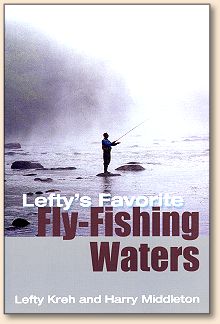
There is one more I just have to mention,
Lefty's Favorite Fly-Fishing Waters,
by Lefty Kreh and (are you sitting down?) Harry
Middleton. Now on the surface, this seems to
be the ultimate in 'ghost writing' - and I did
read enough to find the publication date on the
book is 2004, and in the Introduction by Lefty
himself, he explains he and Harry were working
together on this one, Lefty picked the places
and Harry was doing the research. Harry had,
according to Lefty, worked with him on other
books. Which leaves me to question, since
Harry died in 1993, was the book 'shelved'
because of Harry's untimely death and just
recently resurrected? At any rate, it is
one more in the Fish and Tell series but it
does cover some warm water and saltwater locations.
Lefty's book is also published by the Lyons Press.
If you are traveling a lot and have the
opportunity to fish in different regions,
or perhaps looking for a vacation spot
which will also allow you some quality
fishing time I personally feel you can
get the same or better information by
simply asking here on the FAOL Bulletin
Board. Will the responses be 'as good'
as what you can find in these books? It
may be a great deal better! And with a
bit of courtesy and luck, you might even
get a personal recommendation from another
FAOL member on the nitty gritty details. ~ DLB

If you would like to comment on this or any other article please feel free to
post your views on the FAOL Bulletin Board!
|
